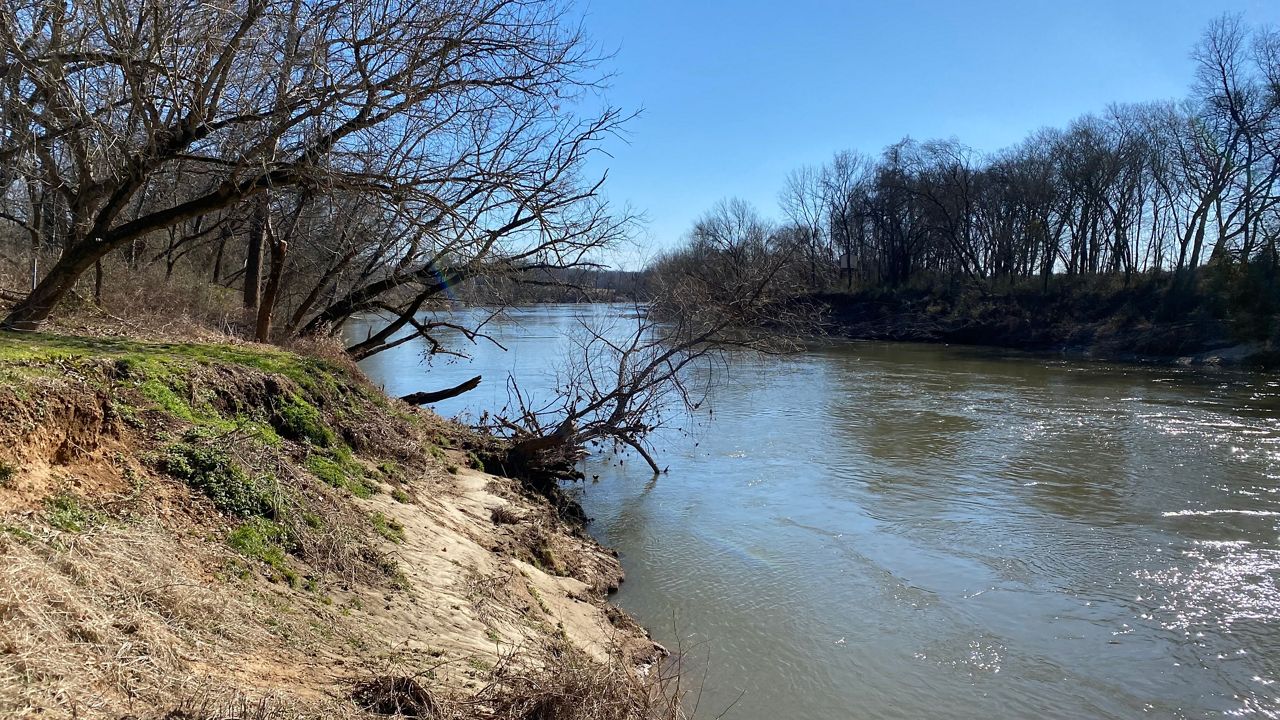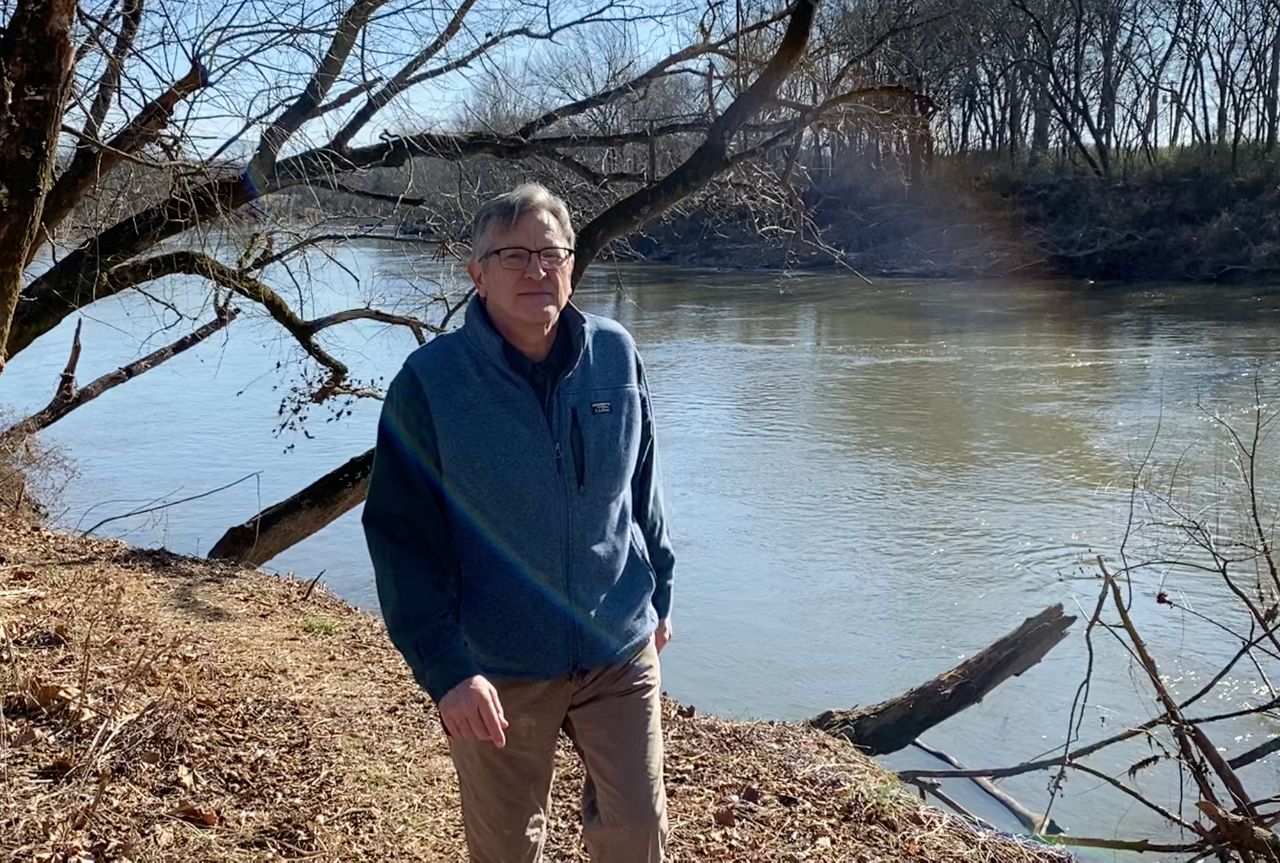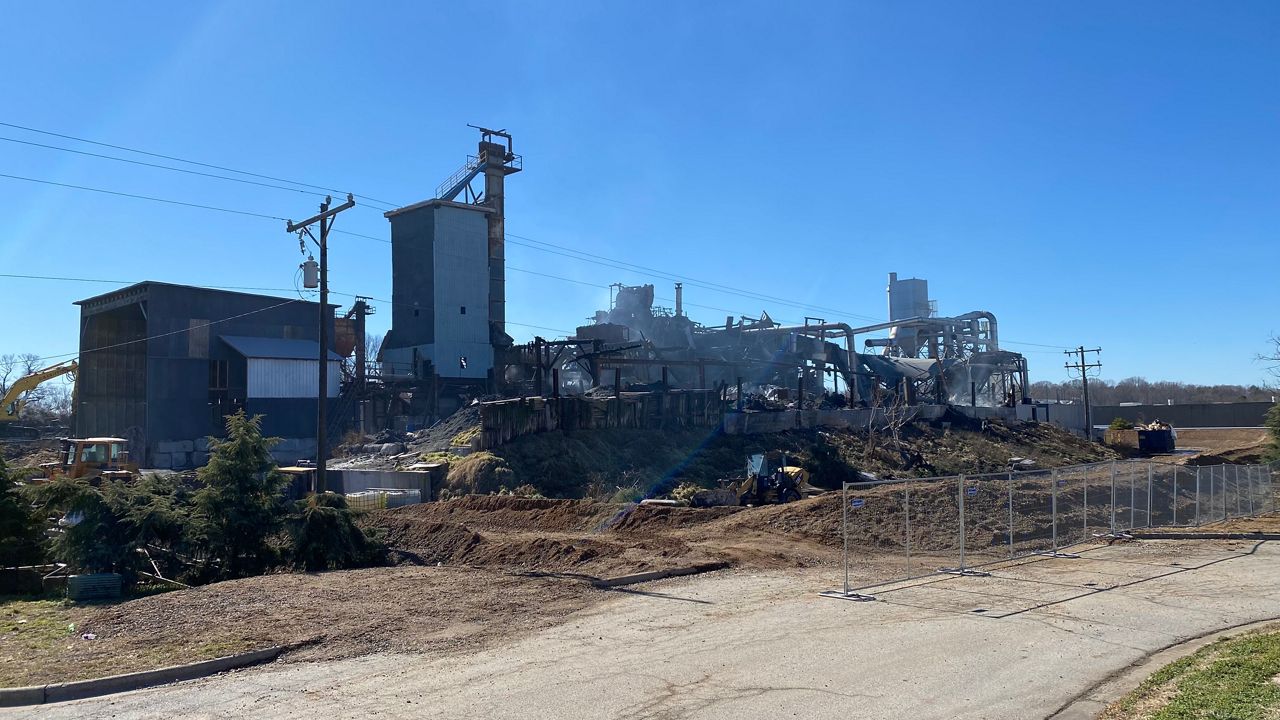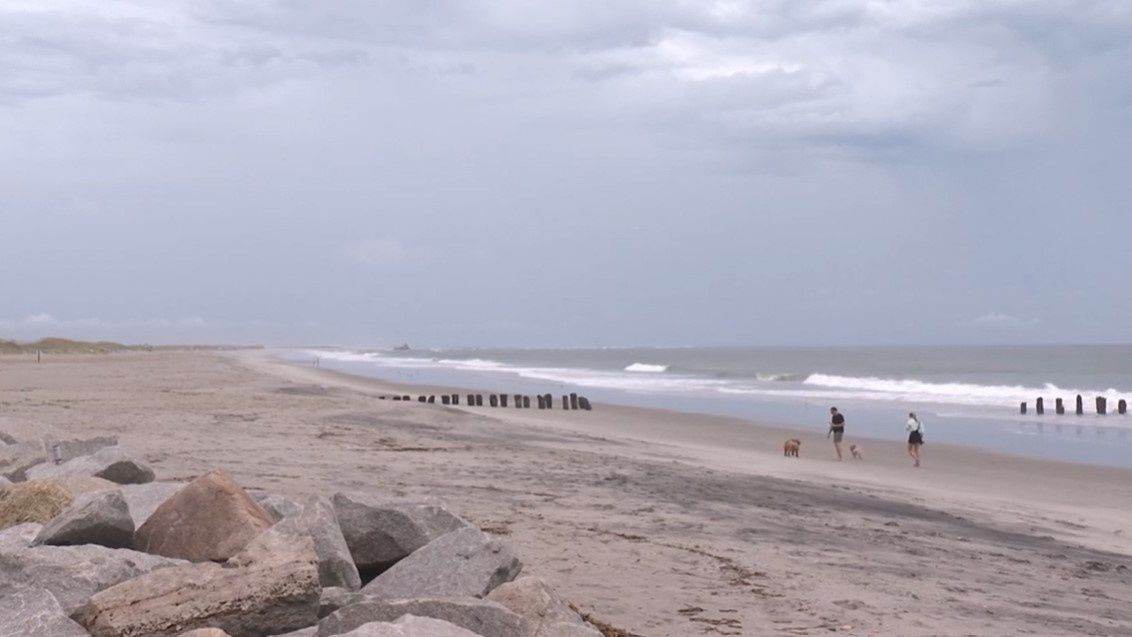WINSTON-SALEM, N.C. — All told, the fire department said it used more than 4.1 million gallons of water fighting the blaze that destroyed a fertilizer plant. The plant burned for days as firefighters stayed back, concerned chemicals at the plant could ignite and set off a massive explosion.
Acrid smoke billowed from the Winston Weaver site. When the smoke was at its worst, the air downwind of the fire was barely breathable. State and federal officials moved quickly to Winston-Salem to help monitor the air quality and figure out what kinds of chemical people were breathing in.
The worst of the smoke lifted quickly after the fire department finally got the blaze under control. But air quality wasn’t the only environmental problem that comes off a fire of that size. There’s also the question of those 4-million gallons of water.
“There are human and wildlife impacts resulting from increased nutrients in the water. Certainly, increasing harmful algal blooms,” said Yadkin Riverkeeper Edgar Miller. Those algal blooms can cause fish kills and make people and animals sick.
As the plant burned in northern Winston-Salem, the biggest concern was ammonium nitrate. There was an estimated 600 tons of the chemical at the site and that could have created a massive explosion.
That ammonium nitrate and the other raw materials for fertilizer are now what is causing concern for the Yadkin River, downstream of the creeks near the fire.
Miller, whose job is to protect and advocate for the Yadkin River, said state environmental officials have been out testing the creeks and the river. They’ve already found elevated levels of the chemicals that go into making fertilizer.
“The results are not encouraging,” he said.

Between about 6:45 p.m. and 8:20 p.m. Monday night, Winston-Salem Fire Chief Trey Mayo estimates his crews put about 600,000 gallons of water on the burning fertilizer plant. Once they realized the danger of the chemicals on the site, the firefighters pulled back a mile from the blaze.
Firefighters were able to get back to fighting the fire at the plant on Wednesday after some rain overnight.
On Thursday, the city used bulldozers and other heavy equipment to build an earthen berm around the site to try to contain any pollution from running off.
“Initially there was some unavoidable runoff and that water was contaminated,” said Minor Barnette, director of the Forsyth County Office of Environmental Assistance and Protection.
He said the city brought in 20,000 gallon tanks, about the size of a flatbed truck, to pump the water off the site so it wouldn't make it into the nearby streams. The city had 28 of the tanks, giving crews enough space to haul about a half-million gallons of contaminated water away to be treated.
“That was a very deliberate and successful effort to capture that water and collect it instead of letting it run off into the stream,” Barnette said.
“As long as there is material on that site that is potentially exposed to rainfall, there will be the potential for additional contaminated water,” he said.
This week the site was still smoldering as crews worked to start cleaning up the collapsed factory building and all the chemicals inside. The large berm is still up on the downhill side of the plant to help catch runoff.
“The fire department did a good job of containing some of that runoff. They built berms, they brought in tanker trucks to haul the water off and to treat it off-site,” said Miller, the Yadkin Riverkeeper.
“We do applaud them for their efforts there,” he said. “Clearly, those first few hours when they didn’t really know what they were dealing with, that obviously got into the creek and those numbers are starting to show.”
“It will be interesting to see over the course of the next few days how those numbers change,” he said. If the chemicals are still getting into the river and the levels stay high, Miller said he would be more worried about long-term impacts.
As the fire was still burning, the city issued a warning for people to avoid fishing or getting in the water, or allowing their dogs in the water, in three creeks because of pollution running off from the fire. The city lifted that public health advisory Thursday.
But as the chemicals flow out of the creek, they will head downstream.

About a 45-minute drive south from the fertilizer factory is a water treatment plant for Davidson County.
U.S. Route 64 passes high above the Yadkin River. Trees washed downstream pile up against the bridge’s concrete pilings. There’s a small canoe launch, with mud-covered steps leading down to the swift-moving river..
This is where the treatment plant pulls water to provide drinking water for about 60,000 people, Miller said.
“Part of our concern is that this river system and the lake system is already overburdened with nutrients. We’ve already been seeing a lot more harmful algal blooms on the lakes. That’s why this is not helpful,” he said.
The creeks in Winston-Salem lead to the Yadkin River, which winds south through North Carolina and eventually joins up with the Pee Dee River and flows through South Carolina and out into the Atlantic.
“Over time, these nutrients are diluted. In our system, they basically get flushed through High Rock Lake and then they go into Badin and Tuckertown Reservoir,” he said. High Rock Lake is between Lexington and Salisbury, North Carolina, and then flows into the reservoir and Uwharrie National Forest.
Algae is already flourishing in the lakes and reservoirs along that stretch of the Yadkin, fueled by runoff from farm fertilizers and sewage treatment plants.
“Tuckertown Reservoir has coverage of anywhere from 70 to 75% with this black-mat algae that is just fed by these nutrients,” Miller said.
Overall, if the company is able to contain all the chemicals at the fertilizer plant site in Winston-Salem, Miller said he’s not too worried about long-term impacts from this one fire.
“The river gets a lot of abuse but it tends to overcome that,” Miller said. “It is a resilient system overall.”






)

